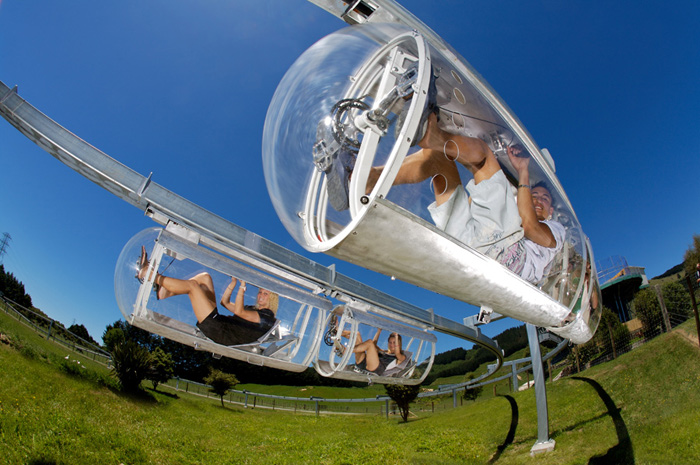The RV of the future
Submitted by brad on Sun, 2013-09-15 16:22Over the years, particularly after Burning Man, I've written posts about how RVs can be improved. This year I did not use an regular RV but rather a pop-up camping trailer. However, I thought it was a good time to summarize a variety of the features I think should be in every RV of the future.
Smart Power
We keep talking about smart power and smart grids but power is expensive and complex when camping, and RVs are a great place for new technologies to develop.
To begin with, an RV power system should integrate the deep cycle house batteries, a special generator/inverter system, smart appliances and even the main truck engine where possible.
Today the best small generators are inverter based. Rather than generating AC directly from an 1800rpm motor and alternator, they have a variable speed engine and produce the AC via an inverter. These are smaller, more efficient, lighter and quieter than older generators, and produce cleaner power. Today they are more expensive, but not more expensive than most RV generators. RV generators are usually sized at 3,600 to 4,000 watts in ordinary RVs -- that size dictated by the spike of starting up the air conditioner compressor when something else, like the microwave is running.
An inverter based generator combined with the RV's battery bank doesn't have to be that large. It can draw power for the surge of starting a motor from the battery. The ability to sustain 2,000 watts is probably enough, with a few other tricks. Indeed, it can provide a lot of power even with the generator off, though the generator should auto-start if the AC is to be used, or the microwave will be used for a long time.
By adding a data network, one can be much more efficient with power. For example, the microwave could just turn off briefly when the thermostat wants to start the AC's compressor, or even the fans. The microwave could also know if it's been told to cook for 30 seconds (no need to run generator) or 10 minutes (might want to start it.) It could also start the generator in advance of cooling need.
If the master computer has access to weather data, it could even decide what future power needs for heating fans and air conditioning will be, and run the generator appropriately. With a GPS database, it could even know the quiet times of the campsite it's in and respect them.
A modern RV should have all-LED lighting. Power use is so low on those that the lights become a blip in power planning. Only the microwave, AC and furnace fan would make a difference. Likewise today's TVs, laptops and media players which all draw very few watts.
A smart power system could even help plugging into shore power, particularly a standard 15a circuit. Such circuits are not enough to start many ACs, or to run the AC with anything else. With surge backup from the battery, an RV could plug into an ordinary plug and act almost like it had a high power connection.
To go further, for group camping, RVs should have the ability to form an ad-hoc power grid. This same ability is already desired in the off-grid world, so it need not be developed just for RVs. RVs able to take all sorts of input power could also eventually get smart power from RV campsites. After negotiation, a campsite might offer 500v DC at 12 amps instead of 115v AC, allowing the largest dual-AC RVs to plug into small wires.




 While I had a preference that Google fund a
While I had a preference that Google fund a